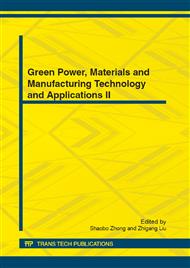p.237
p.244
p.249
p.254
p.259
p.267
p.272
p.276
p.282
Research on the High Leakage Reactance of the Superconducting Controllable Reactor
Abstract:
High leakage reactance of superconducting controlled the working principle and structure of the reactor were introduced Description and analysis of the three modes of operation of the superconducting coil of the secondary side. Three modes of operation of the secondary winding of the two superconducting windings are open, superconducting winding short-circuit superconducting windings open circuit, two superconducting windings are short-circuit. Through the design and calculation of the characteristics of a superconducting controllable reactor three modes of operation, and prospected for high-leakage reactance of superconducting controllable reactor advantages, characteristics and development prospects.
Info:
Periodical:
Pages:
259-263
Citation:
Online since:
November 2012
Authors:
Price:
Сopyright:
© 2012 Trans Tech Publications Ltd. All Rights Reserved
Share:
Citation:


